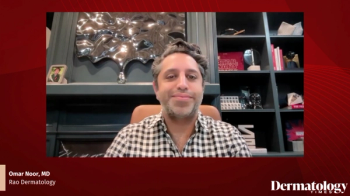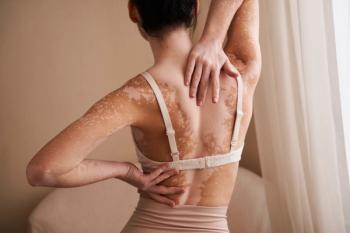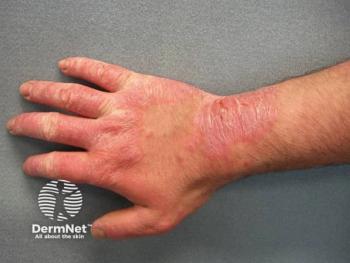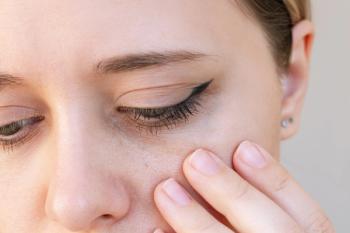
Compound Heparin Sodium Allantoin Gel Can Treat Rosacea and Improve Skin Barrier
Key Takeaways
- The study demonstrated the gel's efficacy in improving erythema, itching, burning, and quality of life in rosacea patients.
- The experimental group showed significant improvements in skin barrier function, with increased hydration and reduced transepidermal water loss.
Improvements in hydration, erythema, itching, and burning were observed after 12 weeks of treatment for papulopustular rosacea.
A new study found that topical compound heparin sodium allantoin gel is effective and safe for papulopustular rosacea treatment.1 After 12 weeks of therapy, patients saw improvements in hydration, transepidermal water loss, erythema, itching, burning, and quality of life.
The randomized, prospective, single-center, controlled trial took place at Xi'an Jiaotong University in Xi'an, Shaanxi Province, China, from March to November 2023. It included 82 patients between the ages of 18 and 60 who were clinically diagnosed and treated for rosacea, with a median disease duration of 3 years. Most were female.
The participants were divided into 2 groups of 41: the experimental group received oral doxycycline 50 mg once daily and the gel 1-2 g twice a day for 8 weeks, while the control group also took doxycycline but with a topical hyaluronic acid emulsion instead. The gel is comprised of onion extract containing quercetin, heparin sodium, and allantoin. With these ingredients, the autoinflammatory product inhibits infection while stabilizing epidermal microorganisms and repairing the skin barrier.
Clinician Erythema Assessment (CEA) scores, Investigator Global Assessment (IGA) scores, the Global Aesthetic Improvement Scale (GAIS), and Patient Self-Assessment (PSA) grades were used. Researchers also measured transepidermal water loss, skin hydration, itching, dryness, burning, and quality of life. All assessments were taken at baseline, 2, 4, 8, and 12 weeks. The primary outcome was a CEA improvement of at least 1 point or an improvement rate of > 10% after 8 weeks.
At 8 and 12 weeks, CEA and IGA grades, burning and itching grades, and rosacea-specific quality of life scores were all significantly reduced in the experimental group. These results were greater and faster than those of the control group, even though no significant differences were observed at weeks 2 and 4. More specifically, the proportion of patients with a decrease of at least 1 point in the CEA score was higher in the experimental group (24/33 [72.73%]; 20/33 [60.61%]) than in the control group (8/32 [25.00%]; 8/32 [25.00%]). This pattern continued for the IGA score (15/33 [45.45%]; 16/33 [48.48%] versus 5/32 [15.63%]; 4/32 [12.50%], respectively). The gel was also effective in patients with Demodex infections.
The skin barrier was improved as well with higher hydration levels and decreased transepidermal water loss in the experimental group (p = 0.008). Additional analysis demonstrated that improvement in skin hydration and transepidermal water loss was related to the improvement in CEA score (p < 0.001). Although dryness did not differ between the cohorts, patients in the experimental group had a significant decrease in itching and burning at 8 weeks (95% CI, p < 0.001; 95% CI, p < 0.001). GAIS and PSA scores were also improved compared to the control. Rosacea-specific quality of life changes were not statistically significant until 12 weeks into the trial.
“Although topical HA is an effective way to strengthen the skin barrier, according to the results of this study, it is far less effective than topical CHSAG for improving the CEA and IGA scores and skin barrier function, and the topical CHSAG-associated improvement in the skin barrier function is related to the improved CEA score,” the authors noted.
About 6 adverse events were noted in the experimental cohort, with a much higher proportion in the control group. Minor reactions included itching and burning, and did not occur after the 2-week mark. No serious adverse effects occurred, and none led to patient discontinuation.
There are currently no drugs approved by the US Food and Drug Administration that can simultaneously treat rosacea and enhance the function of the skin barrier.2 Further long-term, open-label research can identify the optimal dosing for more varied patient populations and make compound heparin sodium allantoin gel an effective treatment for rosacea.
References
1. Xu Z, Yu B, Qing Y, et al. Efficacy and Safety of Topical Compound Heparin Sodium Allantoin Gel (Main Components: Onion Extract Quercetin) for the Treatment of Rosacea. J Cosmet Dermatol. 2025;24(4):e70129. doi:10.1111/jocd.70129
2. Gold LM, Draelos ZD. New and Emerging Treatments for Rosacea. Am J Clin Dermatol. 2015;16(6):457-461. doi:10.1007/s40257-015-0156-2
Newsletter
Like what you’re reading? Subscribe to Dermatology Times for weekly updates on therapies, innovations, and real-world practice tips.



















